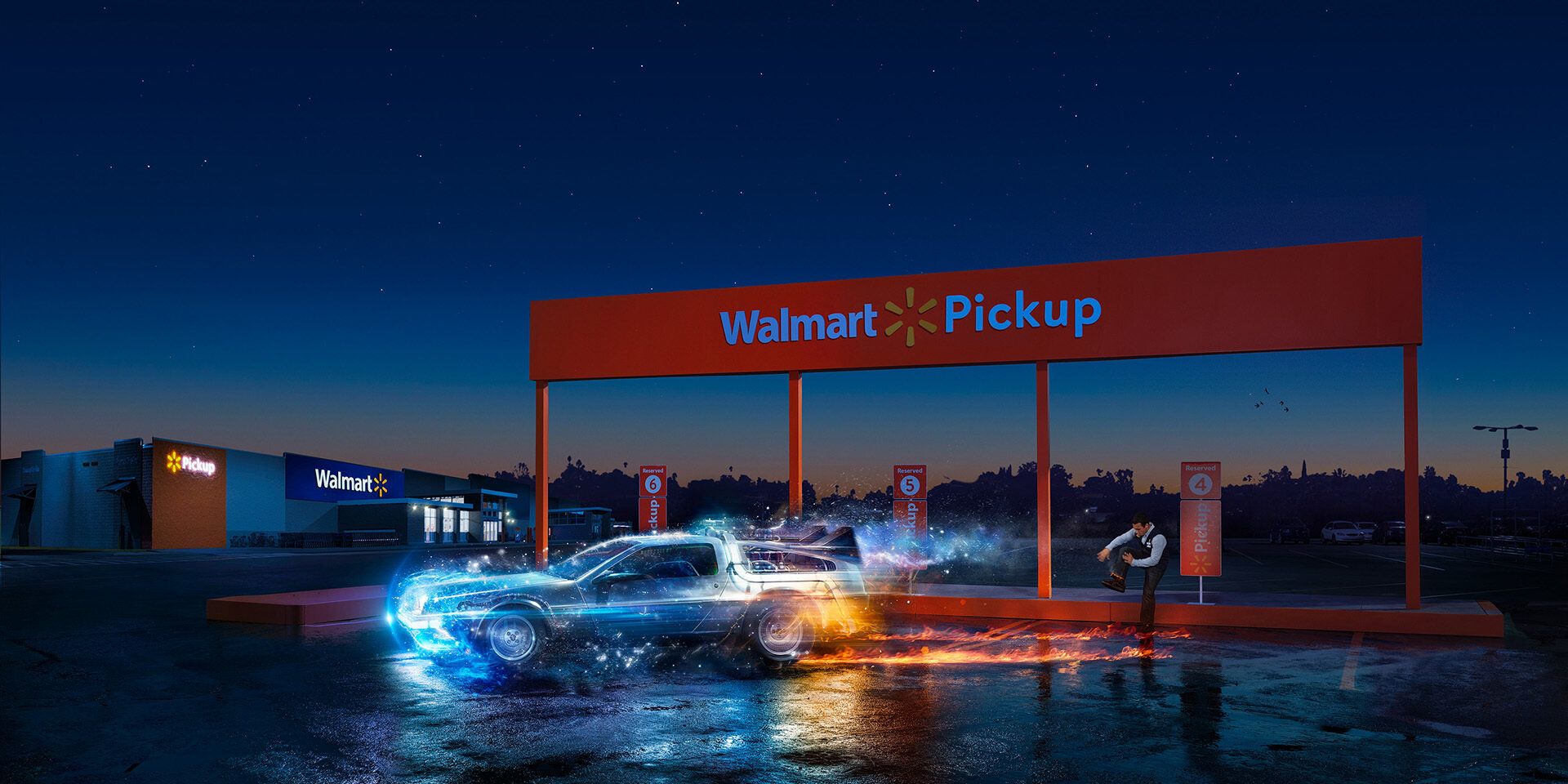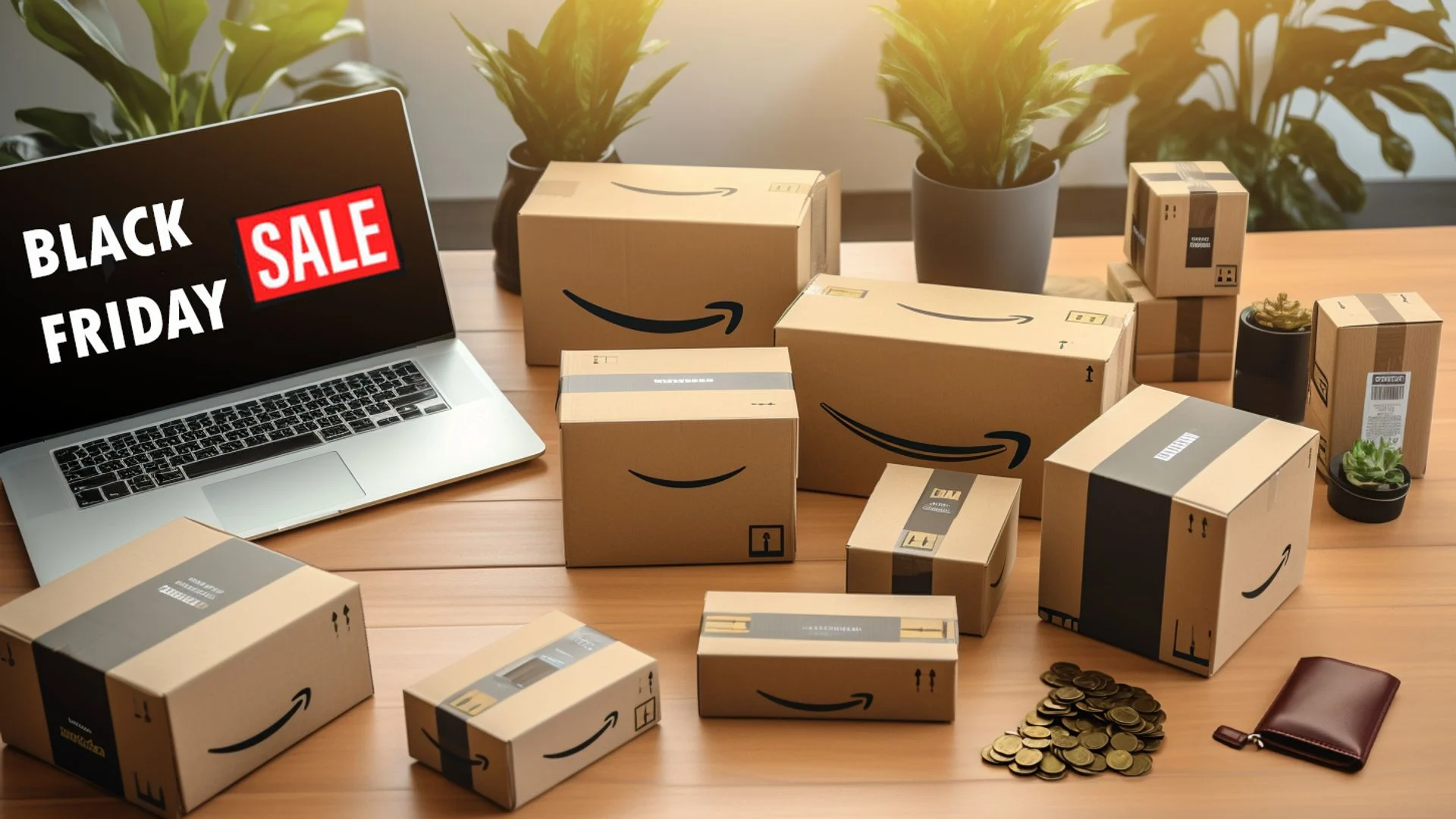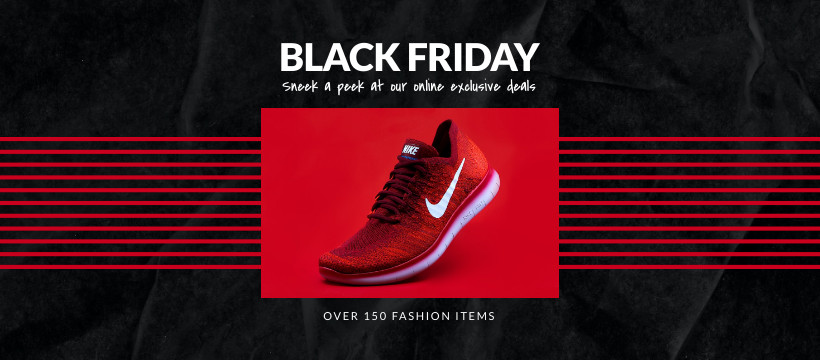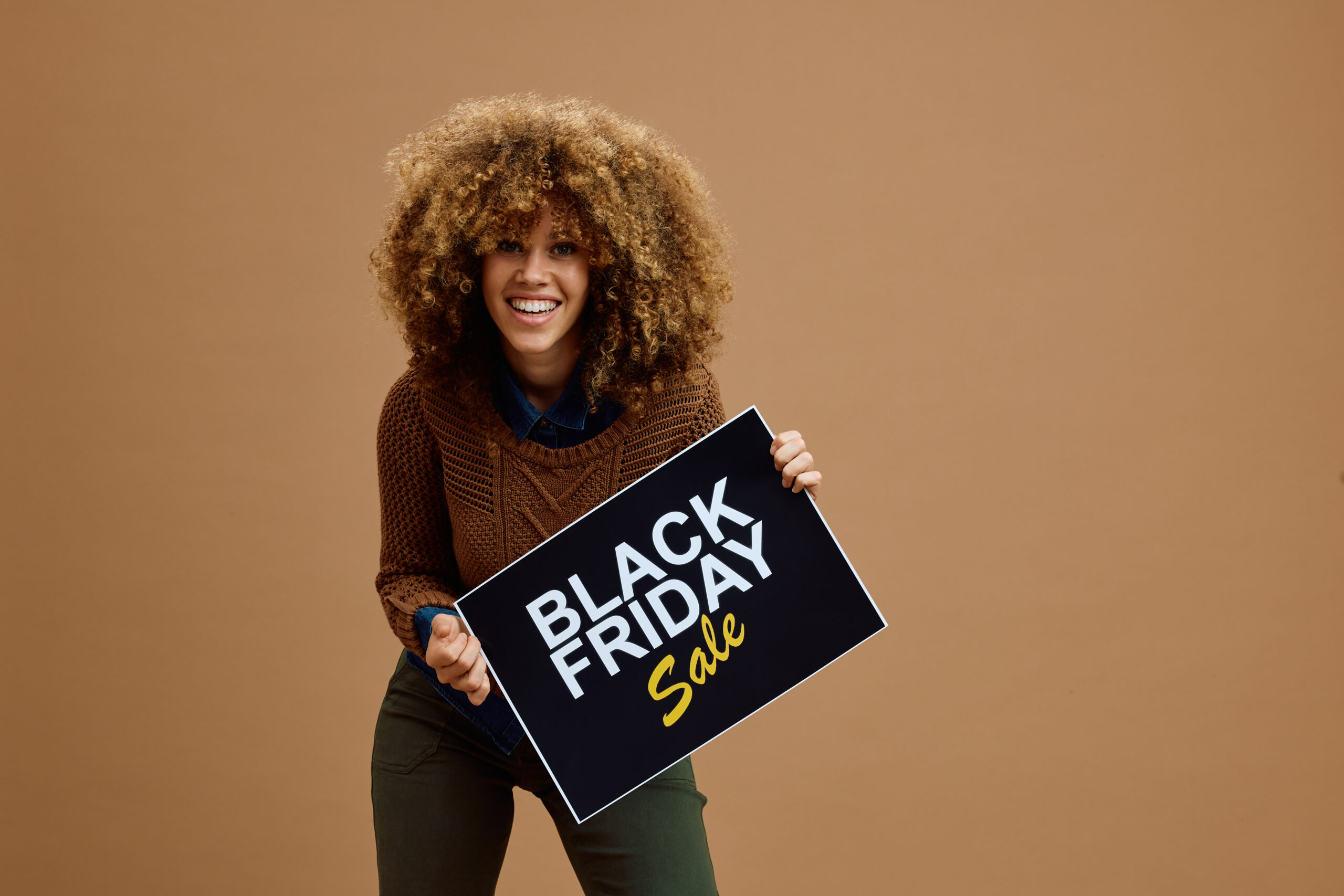As one of the most anticipated shopping events of the year, Black Friday in 2024 is set to draw millions of consumers looking for significant discounts, special promotions, and exclusive deals. This annual shopping tradition continues to evolve, with consumers showing a mix of loyalty to both online and in-store shopping, embracing hybrid experiences, and increasingly valuing sustainability, personalization, and convenience. For retailers, Black Friday is more than a day—it’s an opportunity to drive sales, increase brand loyalty, and capture customer data for future marketing efforts.
In this article, we dive into the critical trends, data-driven examples from past campaigns, and actionable strategies that can help businesses stand out during Black Friday 2024. Whether you’re a major retailer or a small e-commerce store, these insights will help you optimize your Black Friday strategy and meet consumers’ high expectations.
1. Black Friday Sales Trends: The Shift to Hybrid and Online Shopping
The Rise of Hybrid Shopping Models
Recent data reveals that nearly 63.5% of Black Friday shoppers are opting for a hybrid approach, combining online browsing with in-store pickups or visits. This shift towards “hybrid shopping” has led many retailers to adapt, making online stores user-friendly while also offering convenient in-store options. Hostinger’s October 2024 survey showed that 29.7% of consumers now prefer shopping exclusively online, a trend particularly strong among younger generations.
Campaign Example: Walmart’s Omnichannel Success
Walmart’s 2023 Black Friday campaign exemplified how omnichannel shopping can be implemented effectively. By offering online exclusives and flexible in-store pickup options, Walmart increased traffic to both online and physical stores. The retailer also incentivized Walmart Plus members with early access to deals, a strategy that led to an 18% increase in sign-ups. This hybrid strategy was well received, with 85% of surveyed customers stating that they appreciated the convenience and flexibility.

Actionable Strategy for 2024: Invest in an Omnichannel Shopping Experience
For 2024, retailers should focus on optimizing the online-to-store experience. This includes implementing in-store pickup, online reservations, and exclusive discounts for shoppers who engage through multiple channels. Offering “buy online, pick up in-store” (BOPIS) services or curbside pickup options can help capture the attention of both online and in-store customers.
2. Consumer Spending Insights: Budgeting and Price Sensitivity
Increasing Budget Allocations Despite Economic Uncertainty
Despite inflation and economic concerns, 31% of Americans plan to spend more in 2024 compared to previous years. The Hostinger survey indicated that 29.4% plan to allocate between $300 and $499 for Black Friday, while another 25.1% aim to spend between $500 and $999. Interestingly, while consumers are willing to spend more, 62.2% prioritize price over quality, making discounts a central attraction.
Campaign Example: Best Buy’s Tiered Discount System
Best Buy’s 2023 Black Friday campaign used a tiered discount system to appeal to different spending groups. Offering discounts that scaled with the total purchase amount, the company encouraged larger purchases by rewarding higher spending with deeper discounts. As a result, Best Buy reported a 12% increase in average order value, successfully tapping into shoppers’ willingness to spend more while still appealing to their price sensitivity.
Actionable Strategy for 2024: Implement Tiered Discounts and Budget-Conscious Offers
Retailers should consider implementing a similar tiered discount approach, offering different levels of discounts based on total purchase amount. This incentivizes higher spending while making discounts feel more rewarding, ultimately appealing to budget-conscious consumers. Consider pairing this with limited-time offers to create a sense of urgency.
3. Technology in Shopping: The Mobile and Desktop Divide
Mobile Shopping Growth, Yet Desktop Remains Strong
The convenience of mobile shopping continues to resonate with younger audiences, with 46.46% of shoppers preferring mobile for online purchases. However, 44.85% of consumers still rely on desktops. Retailers must create seamless mobile experiences without neglecting desktop optimization to cater to diverse shopping preferences.
Campaign Example: Amazon’s Mobile-First Black Friday Experience
Amazon has long prioritized mobile optimization for its Black Friday sales. In 2023, the company saw a 20% increase in mobile traffic, supported by a simplified one-click purchasing option, push notifications for limited deals, and mobile-exclusive discounts. Amazon’s approach highlighted the importance of mobile accessibility, especially for impulse purchases.

Actionable Strategy for 2024: Prioritize Mobile Optimization but Maintain Desktop Compatibility
For 2024, businesses should ensure their websites are optimized for mobile and desktop users alike. A mobile-friendly layout, quick-loading pages, and responsive design are essential to capture the mobile audience. For desktop users, maintain intuitive navigation and consider adding personalized desktop-only promotions for users who prefer larger screens.
4. Personalization: Tailoring the Shopping Journey to Maximize Conversions
The Growing Demand for Personalized Recommendations
Today’s consumers expect personalization, and Black Friday shoppers are no different. Yet, in 2023, only 3 out of 30 major e-commerce sites provided personalized product recommendations. This gap represents a significant opportunity to increase conversion rates by delivering products aligned with individual shopper preferences.
Campaign Example: Sephora’s Personalized Black Friday Recommendations
Sephora’s Black Friday 2023 campaign utilized data-driven product recommendations based on users’ past purchases and browsing history. Personalized emails and in-app notifications offered tailored product suggestions, leading to a 35% increase in conversion rates among existing customers. This approach demonstrated the value of personalization in enhancing the shopping experience and increasing sales.
Actionable Strategy for 2024: Invest in AI-Driven Personalization
Implement AI-driven tools to provide personalized recommendations and predict what products customers are likely to purchase. From email marketing to on-site product suggestions, personalization enhances the shopping journey and builds brand loyalty. Be sure to include abandoned cart reminders and follow-up offers to capture potential missed sales.
5. Sustainability and Ethical Consumerism: Addressing New Generational Demands
Gen Z’s Preference for Sustainable Shopping
Sustainability has become a priority for younger consumers, especially Gen Z. A recent survey found that 64.4% of Gen Z shoppers consider sustainability important, with many willing to pay a premium for eco-friendly products. Retailers who embrace sustainable practices will likely see a boost in loyalty and brand reputation among these environmentally conscious consumers.
Campaign Example: Patagonia’s “Don’t Buy This Jacket” Campaign
Although not a typical Black Friday approach, Patagonia’s 2023 campaign highlighted the brand’s commitment to sustainability by encouraging consumers to consider the environmental impact of overconsumption. This unconventional strategy resonated with eco-conscious consumers and helped Patagonia reinforce its brand values, resulting in a 15% increase in brand engagement among younger customers.
Actionable Strategy for 2024: Highlight Sustainable Practices and Eco-Friendly Products
For Black Friday 2024, emphasize eco-friendly products and sustainable practices in your marketing materials. Consider adding a “sustainability filter” to your online store, allowing users to easily find green products. Transparency about sourcing and eco-friendly packaging can also appeal to Gen Z and Millennial audiences.
6. Marketing Channels: The Dominance of Email and Rise of Social Media
Email Marketing Remains Key, Social Media Gains Ground
Email marketing continues to drive the highest Black Friday engagement, with 59.2% of respondents reporting that email offers influence their purchase decisions. Social media, however, is rapidly growing in importance, particularly among Gen Z and Millennials, who engage with brands on platforms like Instagram and TikTok.
Campaign Example: Nike’s Multi-Channel Black Friday Campaign
Nike combined email and social media marketing in its 2023 Black Friday strategy. Personalized emails were sent to loyal customers, while targeted ads appeared on Instagram and TikTok, featuring exclusive early access for social media followers. This integrated approach led to a 25% increase in email click-through rates and significant engagement on social platforms, underscoring the value of a multi-channel strategy.

Actionable Strategy for 2024: Build an Integrated Marketing Plan Across Email and Social Media
Leverage email for exclusive offers and cart reminders, and utilize social media for engaging, interactive campaigns. Encourage user-generated content with branded hashtags or offer influencer partnerships for greater reach. Tailor your messages by platform—consider Instagram Reels and TikTok videos for product demos or quick discounts.
7. The Importance of Speed and Convenience in E-commerce
Loading Speed and Checkout Efficiency
On Black Friday, every second counts. A Google study showed that 28 of 30 major retailers loaded their content within 1.8 seconds, significantly boosting their chances of retaining customers. Additionally, a streamlined checkout process reduces cart abandonment rates, which remain high due to long or complicated checkout procedures.
Campaign Example: Target’s Optimized Black Friday Website
Target focused on enhancing site speed and checkout efficiency for Black Friday 2023. Their site prioritized quick page loads, and a simplified checkout process was implemented to minimize abandoned carts. This resulted in a 20% decrease in cart abandonment and a 30% faster checkout process compared to the previous year.
Actionable Strategy for 2024: Prioritize Site Speed and Simplify Checkout
Optimize loading times using tools like Google Lighthouse to identify areas of improvement. Implement a guest checkout option, offer multiple payment methods, and consider one-click purchasing to reduce friction. A faster site and an efficient checkout will significantly impact conversion rates during Black Friday.
8. Last-Minute Tactics: Leveraging Scarcity and Urgency
The Power of Limited-Time Offers and Stock Scarcity
Creating urgency through limited-time offers or showcasing low stock levels can drive faster purchasing decisions. For example, adding “only X items left” or a countdown timer can encourage users to complete their purchase.
Campaign Example: Zara’s “Almost Gone” Black Friday Strategy
Zara effectively used scarcity by marking popular items with an “Almost Gone” label. This tactic led to a 15% increase in conversion rates during Black Friday, as shoppers were motivated to purchase before items sold out.
Actionable Strategy for 2024: Use Scarcity and Urgency Wisely
Consider using countdown timers, flash sales, or exclusive deals that expire quickly to create urgency. Highlight low stock levels or mark items as “last chance” for added motivation. Scarcity techniques can be powerful tools for increasing conversions when used appropriately.
9. Tackling Cart Abandonment: Maximizing Conversions on Black Friday 2024
Cart abandonment remains a critical challenge during Black Friday, with countless consumers adding items to their carts but leaving without completing their purchases. To combat this, businesses must implement strategies that turn potential losses into opportunities. From personalized email reminders to exclusive, time-sensitive discounts for abandoned carts, retailers can re-engage shoppers and drive conversions. Pairing these tactics with simplified checkout processes—such as one-click payments or guest checkout—minimizes friction and boosts sales. Additionally, leveraging urgency by highlighting limited stock or using countdown timers can create a sense of FOMO (Fear of Missing Out), encouraging shoppers to finalize their purchases before the deals disappear.
Preparing for Black Friday 2024
As we look toward Black Friday 2024, understanding and adapting to emerging trends is essential for retail success. By offering a seamless hybrid shopping experience, embracing personalized recommendations, addressing sustainability demands, and optimizing technology for speed and efficiency, retailers can cater to today’s diverse consumer needs. Email marketing remains a valuable tool, while integrating social media strategies and using urgency tactics can further drive engagement and sales.
LavIT Solutions encourages retailers to implement these data-driven strategies to maximize Black Friday performance in 2024. By tailoring campaigns to consumer preferences and refining operational efficiencies, your brand can make the most of the year’s biggest shopping event.
